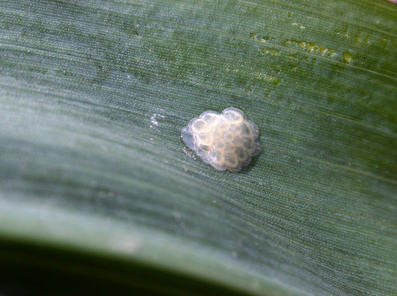Black light trap captures of European corn borer moths within the last week reveal that this once dreaded pest has not become extinct.
True enough, the widespread use of Bt-corn for over a decade has greatly diminished this insect’s numbers. Fact is, that they haven’t gone away, partly due to their multitude of plant hosts ranging from crops, weeds, and ornamentals.
|
|
Over the last several years, we’ve received occasional calls from individuals that neglected scouting for this pest in unprotected corn that were unpleasantly surprised at its presence and damage.
This caution is to growers of all vulnerable crops, e.g., non-Bt field corn, popcorn, peppers, potatoes, hollyhocks, etc.
The first-generation European corn borer moths are flying now. They're attracted to many different plants for egg-laying, usually those taller and healthier than neighboring plants.
One indicator of the moth’s presence and numbers in a local area is noticing their evening mating activity while driving along roadsides or other grassy areas. This “wind-shield” splatter technique should be an alert to begin looking in crop fields for their egg masses laid on foliage and/or hatching larvae.
For field-crop producers, early planted non-Bt corn that is noticeably taller than neighboring fields should be inspected soon. Larvae feeding in the whorl, creating a “shot-hole” appearance, are very treatable with foliar insecticides. Once larvae begin boring into midribs or stalks, efficacy is greatly diminished.
Another negative concerning this insect is their affinity for infesting weeds, especially giant ragweed. Now initially this sounds like a good thing. Problem is, corn borer don’t kill the ragweed, their tunneling prevents translocation of herbicides such as glyphosate throughout the plant.
So treated weeds may look miserable for a time, but in time begin to send out regrowth from growing points that didn’t receive herbicide. Any tall, giant ragweed out in fields right now still yet to be treated?

 A European corn borer egg mass, which is often likened to fish scales. (Purdue Univ. photo)
A European corn borer egg mass, which is often likened to fish scales. (Purdue Univ. photo)




Post a comment
Report Abusive Comment